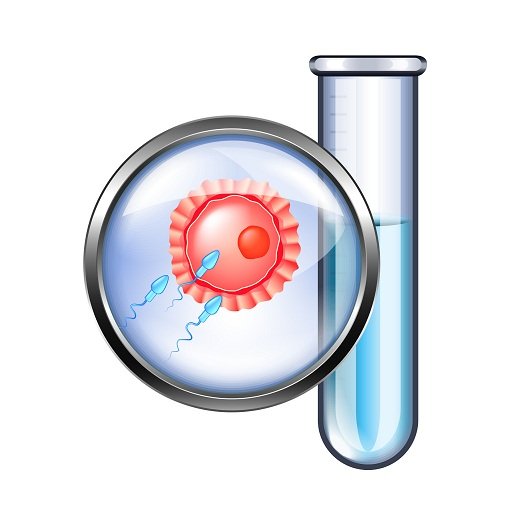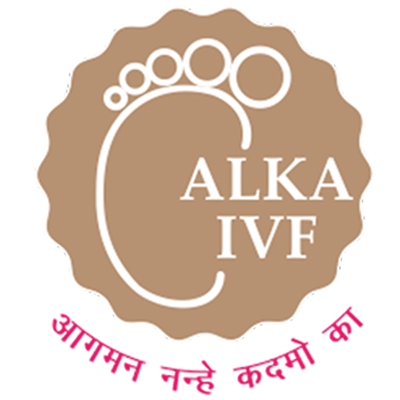In-Vitro Fertilization
In-vitro fertilization is a method of assisted reproduction where sperm and egg are fused in the IVF laboratory instead of in a woman's uterus. When fertilization of the egg occurs, the embryo is formed, which is then transferred into the uterine cavity. When these embryos implanted in the uterus they develop into babies, as it happens in natural conception.
There are currently two main IVF techniques:-
- Classic IVF
- IVF / ICSI.

IVF Treatment in Udaipur,India
- A detailed history of both husband and wife is first taken and then they are examined. A battery of basic investigations is advised particularly hormonal tests. An ultrasound examination of the wife is done which can be done on any day of the menstrual cycle. However, to assess the number of eggs in the ovary, the USG examination is preferably done on the 2nd or 3rd day of the cycle.
- Documentation for the couple is completed as soon as the test results are available. Then after explaining all the reports the specific treatment plan is discussed by the doctor with the couple and then the treatment is started.
- IVF procedure comprises of 5 vital steps elaborated below:-
Step 1: Stimulate the ovaries
Under normal physiological circumstances, a woman forms only one egg in one menstrual cycle but for IVF Treatment In Udaipur, India we need more than one egg to form more than one good quality embryos. To get more eggs the lady is given medicines or injections for stimulating the ovaries every day, for about 10-14 days. During this period of ovarian stimulation, she will have ultrasound examinations and blood tests 3-4 times to monitor the development of the follicles.
When the follicles reach the required size, the lady is given the last injection called trigger injection for the final maturation of the developing eggs. This injection needs to be injected at a specific time, usually at night, as it initiates a series of changes in the eggs and then the eggs must be taken out of the body within an exact time frame, usually 34 to 36 hours after this injection.
Step 2: Ovum pick up (taking out the eggs from the ovaries)
About 34-36 hours after the ovulation trigger injection, your doctor will perform a vaginal ultrasound-guided ovum pick up. The eggs are aspirated out of the body using an ovum pick-up needle.
For the ovum pick-up procedure, the lady is under short general anesthesia for around 15 to 20 minutes. Therefore, the patient should be fasting for 6 to 8 hours before this procedure.
It is a simple procedure and takes 15 to 20 minutes. Around the same time, the husband is asked to provide sperms to prepare embryos. Sperms can also be taken from a frozen semen sample (if previously provided and frozen). Sperm freezing is used when the male partner is away or not able to provide a semen sample on the day of egg retrieval.
This procedure is a daycare procedure and the lady is kept under observation till she regains full consciousness and is ready to walk out of the hospital. It usually takes about 2-3 hours after the ovum pick up procedure is over.
Step 3: Create the embryo
The collected eggs and sperms will be transferred to the Embryology laboratory for fertilization. Embryos are cultured in the IVF lab for 2-5 days.
If the embryos are transferred into the uterus in the same cycle in which eggs are retrieved, it is called fresh embryo transfer. In such cases, some medicines are given to the patient to make her uterus more receptive for pregnancy.
In frozen embryo transfer cycle, good quality embryos are frozen and the transfer is done at a later date. Frozen embryo transfer has a better success rate than fresh embryo transfer as the elevated hormones resulting from ovarian stimulation come back to normal levels once the current menstrual cycle is over. Medicines are then prescribed by the doctor to prepare her uterus to receive the pregnancy. Frozen embryos are first brought back to life by the process known as the thawing of embryos and then transferred when the uterus is adequately prepared.
Step 4: Transfer the embryos
The couple is informed about the quantity and quality of the embryos formed as soon as the embryos are ready. The doctor then discusses the number of embryos to be transferred into the uterus as well as the number of embryos that can be frozen.
When the lining of the uterus is found to be sufficiently thick and of good quality to support implantation and development of the embryo, the doctor transfers the embryos.
After the embryo transfer, the lady can ambulate and walk back to her home. For two weeks after transferring the embryo, the lady is advised to continue the medicines prescribed by her doctor. These medicines have pregnancy support hormones and few multivitamin supplements.
Step 5: Pregnancy test
Two weeks later, a blood test is performed to determine the outcome of the IVF procedure. It is called Beta hCG Test. If Beta hCG levels are > 25 IU/ l it suggests pregnancy. This level can be high or low depending upon the day on which the embryos are transferred after the occurrence of fertilization.
If it is a blastocyst transfer, usually performed on Day 5 of fertilization, then this hCG report should be more than 500 IU/L. Such a report would suggest a good pregnancy outcome.
If Beta hCG levels increase by more than one and a half times every 2 days, it suggests that the embryo is developing well. Under such circumstances, continue taking medicines until the day of ultrasound to determine the number of pregnancies (fetal sacs) and fetal heart.
If Beta hCG levels after 2 days neither increase nor decrease, then continue monitoring. This is called biochemical pregnancy. This needs to be followed up till Beta hCG concentration becomes negative (<5 IU / l).
In case the lady does not become pregnant after the first attempt and her frozen embryos are still left, the couple can use the frozen embryos for transfer into the uterus during the next cycle without having to undergo another ovarian stimulation and ovum pick up steps again.
IVF step by step
In-vitro fertilisation (which means fertilisation in a jar in Latin) is suitable for couples who are not able to have children naturally. It refers to artificial insemination outside the human body. Here eggs are removed from the patient’s body and are combined with the mans sperm in the IVF laboratory. Once the embryos are grown they are replaced in the patients uterus for further development.
1.Hormonal stimulation of the ovaries
Several eggs are required so that there is the highest possible chance of fertilisation. In the regular course of a menstrual cycle, only one single egg grows. To retrieve multiple eggs we need to hormonally stimulate the ovaries. The hormones are given in the form of injections and the advanced technology has made it very patient friendly. The injections are genetically engineered virtually having no side effects and are to be injected under the skin which is not painful at all. It usually takes 8 to 12 days on an average of 10 days for the follicle’s containing eggs to grow to sufficient size. At the right time, the last injection is given for the final maturation of eggs before they are removed from the body called maturation or trigger injection.
2. Removal of eggs
Approximately 36 hours after trigger injection egg collection is performed. This is a day care procedure done under anaesthesia using vaginal ultrasound. A needle is introduced in the follicle under ultrasound guidance to aspirate the follicular fluid along with the egg. The collected eggs are examined in microscope to check for the number, quality and maturity. This procedure of egg collection is of 10 to 15 minutes and is tolerated very well by the patients. Occasionally there may be slight discomfort but these quickly go away
3. Process of fertilisation
After the eggs are retrieved, sperms are required for fertilisation in the laboratory. Either fresh sperms can be used or frozen semen can be used for fertilisation. In conventional IVF sperms are overlaid the eggs in the nutrient medium to allow natural fertilisation. In ICSI Treatment the sperms are injected individually in the eggs to do the process of fertilisation by the ICSI machine. The embryos then created are allowed to grow to 2-3 days or till 5 or 6 days when they are call blastocysts. At this stage maximum two embryos can be transferred and rest can be frozen to be utilised later on..
4. Embryo transfer
Embryos are grown for two to five days before they are inserted into patient’s uterus. The process of embryo transfer is very simple, painless done without anaesthesia. A special catheter that is very thin, narrow and has a high degree of flexibility is used to place the embryos in the uterus. The number of embryos to be transferred is discussed with the couple. In day 2/3 transfer up to three embryos in number can be transferred while in blastocyst transfer maximum two can be done. In principle, the greater the number of embryos the greater the likelihood of multiple pregnancy which is a high risk pregnancy. Weather IVF- embryo transfer was successful is determined by testing a hormone (beta Hcg) in the blood after two weeks of embryo transfer. This is the hormone which gets detected first if you have successfully conceived. Welcome the parenthood.
